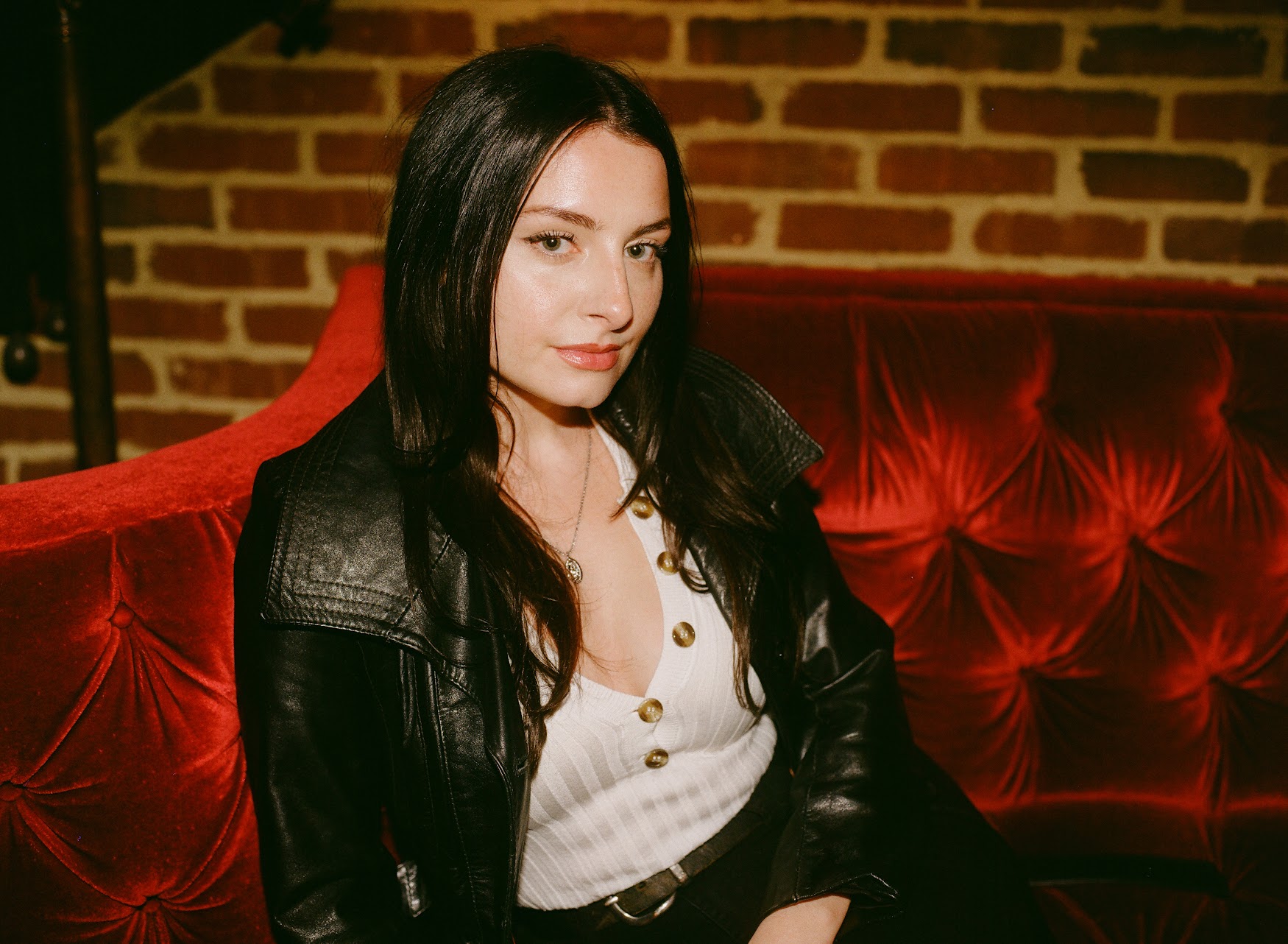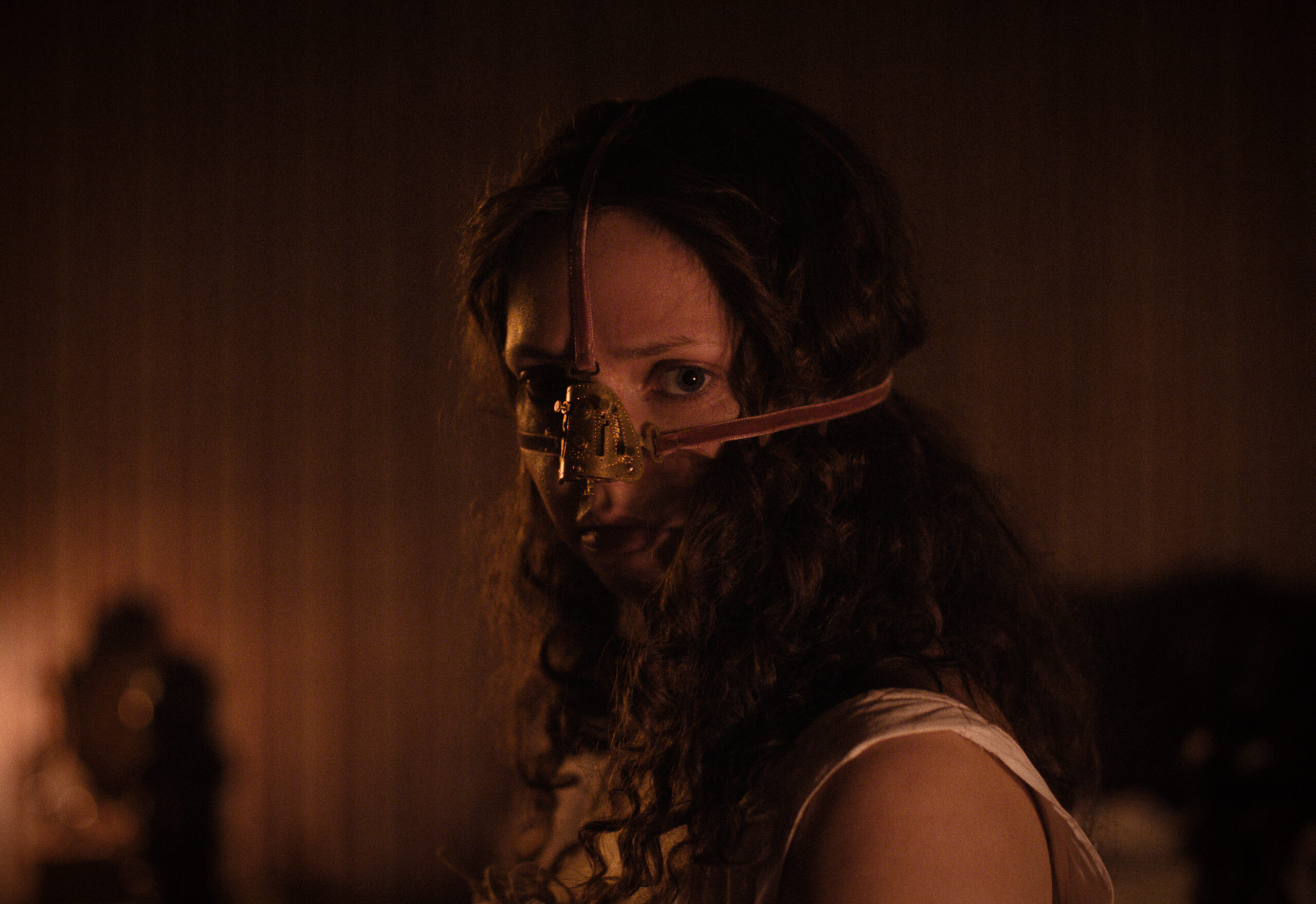Alice Palmer (Talia Zucker) is first described as a secret keeper. “Alice kept secrets,” June (Rosie Traynor), her mother, says. “She kept the fact that she kept secrets a secret.” This opening description of Alice, along with Alice’s own voiceover announcing that she is certain something bad is going to happen to her, marks her as a particularly troubled adolescent. At first blush, Alice appears to be uniquely cursed and disturbed.
The Alice that her family “discovers” after her tragic and unexpected drowning is one who went to psychics with feelings of dread. She is an Alice who had threesomes with the adult neighbors she babysat for. This is, of course, unrecognizable to the Alice that her family knew—a girl who loved her brother, who smiled wide in footage of family trips to the dam.
In the final act of Lake Mungo, Alice’s unrecognizable behavior, her unrecognizable internal self, appears as a physically manifested form. The Palmer’s winding search for answers — mostly dissatisfying, because what could really satisfy the senselessness of your daughter dying? — leads them to an old mobile phone of Alice’s, buried at a campsite called Lake Mungo. The phone holds shaky, grainy footage of Alice’s dead self walking toward the camera, somehow impossibly seen and filmed by the living Alice. Alice sees herself as she will be found by her family—drowned for days, mottled, and deeply uncanny.

In Sigmund Freud’s paper “The Uncanny”, he defines the term as “that class of the terrifying which leads back to something long known to us, once very familiar.” Which is to say that Alice—both the “secret keeper” version of Alice that the Palmers discover and the drowned Alice are not totally unrecognizable. In fact, what is frightening about the found footage is that Alice is recognizable. Alice is horrified while filming because she knows instinctively that the bloated, distorted face she’s documenting is her own. Her parents know it is her because they have seen her dead body come to fruition—drowned Alice, Alice the secret keeper.
I watch Lake Mungo with my sister, who is usually unscareable and thus unaffected by much of the movie. But she covers her eyes as I do when the deceased Alice appears to her living self. “I hate a weird face,” my sister says.
In Soula Emmannuel’s novel, Wild Geese, the protagonist Phoebe muses at one point:
“Small children carry the element of surprise in vast seams, which is why they come over so endearingly triggered by peek-a-boo and bathroom hand dryers and the fact of their own mortality. As we get older, the surprise stock dwindles as suppositions harden and are increasingly impossible to thwart. That is maturity: the process by which expectation is wiped clean like an incriminating hard drive.”
There are very few jump scares in Lake Mungo. In fact, if you don’t count the skips that can be passed off as a formal exercise in mimicking the cheap cameras used for found footage, there are no official scares at all. No peek-a-boos. What is scary about Lake Mungo is that Alice, despite her family’s and even her own attempts to frame her as a special case, is not uniquely cursed and disturbed. Lake Mungo makes tangible one of the most isolating and harrowing discoveries of adulthood: you cannot be fully understood as you by anyone. The way my sister sees me is not how a lover sees me, which is not how my father sees me, which is not how my friends see me, and so on and so on. Would I recognize myself in any of their eyes?

Lake Mungo brings to mind a specific adolescent limbo. It reminds you of a time that you were old enough to fear death and to feel alone, but not old enough to have become accustomed to the sensation—to either make peace with it or numb yourself to it. Expectation is not yet wiped clean. One of Alice’s journal entries tells of a dream she has in which she goes to the end of her mother’s bed to ask for comfort, before realizing that her mother cannot save her from this feeling of loneliness. We must all eventually reckon with the fact that no one will fully have the solution for the occasional melancholy of living, no matter how sturdy their love and support and understanding of our inner workings may have once seemed. And yet, at this same age, Alice is also young enough to be scared of the dark hallway and of ghosts. She is still young enough to even think of running to her mom.
Alice also cannot yet see her own self in full; to have a self-actualized vision of yourself at sixteen is almost certainly an impossibility. You have not yet developed a sense that you may be able to care for yourself, nor have you reached an acceptance of the fact that you cannot be seen in full by everyone, and that this does not make you a secret keeper, but in fact just a human.
When the Palmers find a tape of Alice having sex with the adult neighbors she babysat for, her parents chase tangential justice for her physically unrelated death (though perhaps the events are spiritually tied, somehow, as who is to say for certain the collection of turns that brought Alice to such a place of dread as to see her dead self). The Palmers report the event to the police, and are buoyed in confidence by the tangible evidence they have. But ultimately, there’s not much point. The neighbors have already skipped town, and even if they were found, they likely would have a suspended sentence on account of the videotaped sex “appearing consensual”.
The threesome in particular reads to me as emblematic not of Alice as a secret keeper or a doomed soul, but Alice as a still-forming being. Perhaps the tape “appeared” consensual because, at the time it “felt” consensual to Alice. She did not yet have the chance to develop the personal value system to feel any type of way toward her neighbors’ predation — be it accepting, conflicted, or harmed. Her feelings toward her sexual forays with her predatory neighbors may have been changing, if her reclamation of the tape was any clue. But, if the rest of the information we accumulate about Alice is also any clue — an impending sense of dread, the hiding of the sex tape in her bedroom, her capacity to perform and compartmentalize for different people — she was very much in the midst of adolescent upheaval, uncertain about who she was, even to herself.
What’s scary about Lake Mungo is the unavoidable fact of interiority and humanity that lays beneath Alice’s death. We cannot be our full selves to anybody. Even if we tried. Or maybe it’s that we wouldn’t want to do that. What seems to really kill Alice is the notion that she saw herself in full—a being that will one day die. A mortal thing beneath all that she was to all other people, all that she was to herself. Maybe Lake Mungo is suggesting we aren’t meant to know that. Freud writes, “It is true that the proposition “All men are mortal” is paraded in text-books of logic as an example of a generalization, but no human being really grasps it, and our unconscious has as little use now as ever for the idea of its own mortality.” “Unheimlich,” Freud cites one definition, “is the name for everything that ought to have remained…hidden and secret [that] has now become visible.” Does the Palmers’ knowledge of Alice’s “secret life” actually assist with their processing? Would I want my journals, the photos and videos on my phone, the evidence of the way I live my life with each individual person in it, pored over if I were to die? I’m not sure I’d be in any state to care. But Lake Mungo suggests that closure by seeing a loved one “in full” —despite the Palmers insistence that this process worked—is a fraught idea.
After finding Alice’s self-taped footage of her doppelganger, the Palmers decide that Alice has been trying to guide them on this path all along. The Palmers don’t “feel” anything when they return to their home from Lake Mungo. They consider themselves finally ready to move on, going so far as to move out of their family home entirely. And yet in the final shot, we see a tragic ghostly figure — poor, lonely Alice — looking out at her smiling family, who now face away from her. The true horror of Lake Mungo isn’t the dissonance itself, which we all experience, but being trapped in that limbo forever—your knowledge of your mortality on one end, your youth and all of its raw nerves on the other—before you have the chance to mute it or put it away.

The horror, to me, isn’t found so much in Alice feeling dissonance and a sense of dread. She is, after all, sixteen, and this is what nearly every sentient sixteen year old feels at least in passing. In fact, Alice’s last name, the form of her death, and the hidden life slipped behind her walls in the form of a tape and journals, are all evocative of Twin Peaks’ Laura Palmer. This potential homage, written about more beautifully than I could do justice in Claire Patterson’s “Lake Mungo, Laura Palmer, and Facing My Grief”, points to the fact that the grief and strife of these girls note a more universal experience, not one that is distinctly cursed. The horror is found in the fact that Alice will maybe be trapped in that raw, lonely, fractured adolescent limbo forever.
I feel fear when I think about Lake Mungo because I am reminded of what I have worked so hard to put away. The parts of me that do not square neatly, the knowledge that I am mortal, the ways in which I am a different but uncannily recognizable person toward so many people in my life. I recognize Alice in the window as me a decade ago, sitting with the weight of the new knowledge that despite how invincible I felt at sixteen, I would not be around forever, and that parts of me were hidden away from each person I knew, and that it felt like keeping a secret to not let everything I felt scream out of me at all times. At the precipice of adult wisdom, and yet still young enough to be scared of the dark, to be scared of being left alone. Lake Mungo haunts a place much deeper, much less tangible, than the halls of your childhood home, while also knowing that’s where all of those big feelings likely still live.



